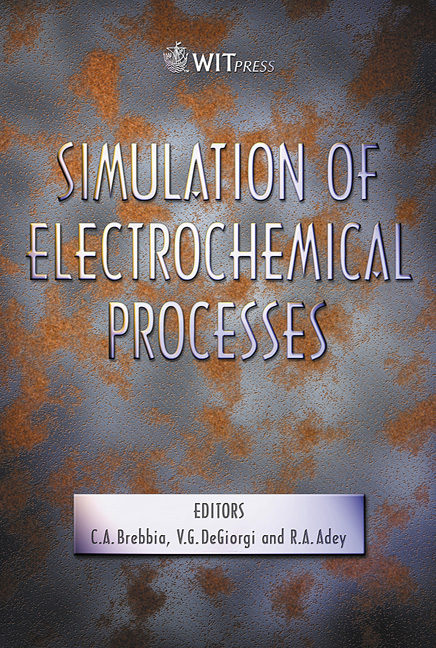Numerical 3D BEM Simulation Of The Chromium Layer Thickness Distribution On Parts In A Rack Plating Configuration
Price
Free (open access)
Transaction
Volume
48
Pages
9
Published
2005
Size
2,160 kb
Paper DOI
10.2495/ECOR050171
Copyright
WIT Press
Author(s)
J. Deconinck, G. Floridor, B. Van den Bossche, L. Bortels & G. Nelissen
Abstract
A three dimensional Boundary Element Method (BEM) approach is used to compute the current density and plated layer thickness distribution on parts of complex shape in a rack plating configuration. Results are shown for a decorative chromium plating process. Simulations take into account electrode polarisation characteristics and the plating efficiency. The entire plating tank configuration is considered, including dimensions and position of anode baskets or rods, the number of parts on the rack, and the position of the rack in the tank. For decorative chromium plating, simulated results reveal that parts located at the outer positions of the rack receive a current that might double the value received by a central part, hence also the average plated thickness from one part to another might differ by a factor 2. The variation of the plated thickness on a single part is up to a factor 5 or more, with some of the inner zones receiving no layer thickness at all. These results are in agreement with industrial experience. The BEM solver is integrated in the SolidWorks CAD environment, enabling a fast modification of the dimensions of the entire configuration (rack configuration, current thieves, etc.), the surface mesh characteristics (determining the computational accuracy), and the physico-chemical input parameters (polarisation and efficiency characteristics, electrolyte conductivity, imposed DC or bipolar currents, etc.). Keywords: electrodeposition, plating, advanced software packages, BEM.
Keywords
electrodeposition, plating, advanced software packages, BEM.





